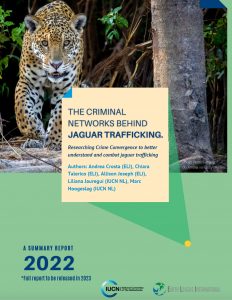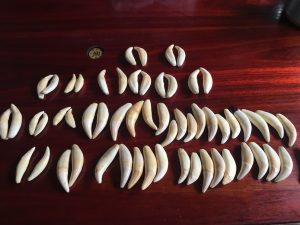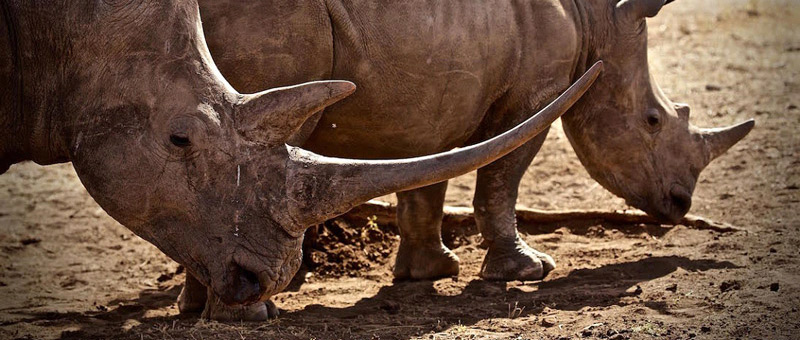Operation JAGUAR: Summary Report:
Researching Crime Convergence to better understand and combat jaguar trafficking
Los Angeles, 14 November 2022. Earth League International began investigating the trafficking of jaguar parts in 2017. Operation JAGUAR was launched in 2019, in collaboration with IUCN Netherlands and the International Fund for Animal Welfare (IFAW), and funded by the Dutch Postcode Lottery.
The goals of this multi-year operation were to address jaguar trafficking in Latin America, with a focus on the scale, nature, and dynamics of the trade.
Currently, the jaguar (Panthera onca) is listed on CITES Appendix I and is classified on the IUCN Red List as ‘near threatened,” with numbers continuing to decrease for a variety or reasons, including poaching and trafficking. Jaguar’s parts, mostly fangs and bones, are primarily destined for Chinese markets to be sold as a valid substitute for tiger parts. Chinese medicine has ascribed magical powers and medical properties to tiger bones and teeth for millennia. Thus, many Chinese refer to jaguars as “the American tiger.”

Over the past years, ELI has conducted field investigations on jaguar and wildlife trafficking in Latin America, focusing on some of the most important transnational trafficking networks in the region. Through its intelligence-gathering operations, ELI has researched the illegal wildlife supply chain to unveil the dynamics underneath jaguar and wildlife trafficking and identify the main players, trafficking routes, and destinations.
ELI has successfully identified more than a dozen transnational jaguar/wildlife trafficking networks operating regionally and internationally and has shared numerous Confidential Intelligence Briefs (CIBs) with a few governmental and intergovernmental agencies, including Peruvian, Bolivian, Dutch and American authorities.
A first report published by IUCN NL and ELI in 2020 showed that transnational trafficking networks are behind the illegal trade in jaguar parts from Bolivia.
The following is a preliminary report, which provides a deeper look into jaguar trafficking, providing an overview of Operation JAGUAR’s key findings in the countries of Bolivia, Suriname, Peru, and Ecuador, followed by a case study of a top transnational jaguar trafficking network(s) identified through investigative fieldwork.

Through the presentation of detailed evidence and first-hand information, the report highlights jaguar/wildlife trafficking’s convergence, or overlap, with other serious crimes, such as drug smuggling, human trafficking, gold trafficking, or money laundering. This is analyzed through ELI’s 4-Type Environmental Crime Convergence Paradigm, based on primary data collected from over 2 dozens international trafficking networks linked to Transnational Organized Crime (TOC).
Finally, conclusions and recommendations are provided regarding actions and steps needed to continue addressing the illegal jaguar trade in Latin America.
Download here the report: ELI-IUCN NL Jaguar Summary Report Nov 2022
The full report will be released in 2023.


